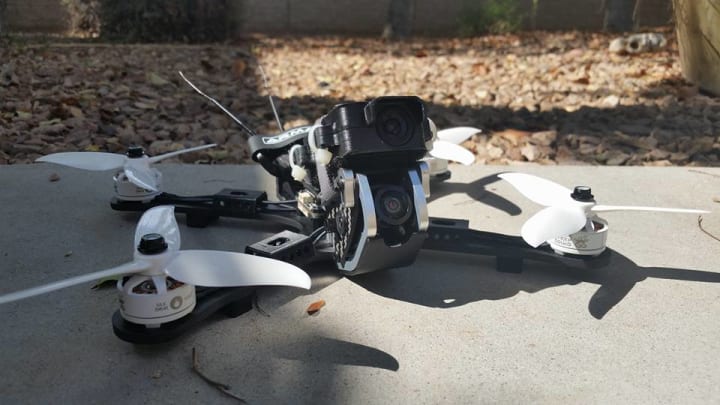Soldering as a Beginner
Just Another Skill in Progress

I have loved tinkering since I was a kid. I dismantled absolutely everything I could get my hands on. Of course, as a kid in the heat of my excitement, a lot of things would break, and as you might guess my father was not a fan of any of this. After a while a new house rule was created. If I took anything apart I had better be able to fix it. This forced me to learn how to solder with nothing more than online articles to teach me. I'd like to share some of the things that have worked for me with anyone who is new to the hobby. If you want to skip all the nonsense and get right to the tips and tool list jump down to the bottom.
I started out with a little cheap red Iron from home depot and a tiny reel of silver rosin core solder from the same shelf; that is all I had to work on tiny little connections inside of pocket CD players and old radios. I was completely devoid of some tools I consider indispensable nowadays such as helping hands, and tip cleaning wire. Looking back, the learning curve was steep but not unattainable even with the cheapest supplies I could source locally.
Two years ago I had discovered FPV Unmanned aircraft models and the amazing experiences that come with them, but as said "everything that goes up must come down" and sometimes it comes down a lot harder and faster than you expected. Having to solder tiny little points in the field really allowed me to practice my soldering with little to no equipment and that has really become my style within soldering: working with as few tools as I can to get the job done whilst being able to do it anywhere I need to.
Anyway, let's get into the tips.
- Absolutely positively clean your iron as you're using it; clean it more than you think you have to. This will keep the iron's tip from oxidizing and make your life more difficult than it has to be.
- Use a tinning flux pen or paste on any solder joint you plan to make or remove. This is going to save you time, and from burning your boards. I have found that properly using flux prior to putting the iron to anything greatly improves the bond the joint makes and the time it takes to heat up the solder involved.
- Have the right iron for the task; the higher the wattage of the iron; the hotter it is going to get and that is not always what you want. When working with small electronics such as on SUAS Devices or Children's toys you may end up melting nearby components simply with radiant heat. I personally use a TS100 Soldering iron for all of my small electronics work.
- Anytime you plan to remove a joint I recommend adding a small amount of solder to the tip of your iron as this will kickstart the process when you touch the hot solder of your iron to the solder of the joint. This trick has really improved my soldering work overall.
- Try to keep your work area as clean as you can and make sure your soldering iron is not touching anything as it will drain its heat into surrounding objects and be "cold" by the time to go to use it. Oh and it may start a fire, probably don't want that either.
All links are Amazon Affiliate links. I have sourced out the best prices for the products I recommend.
- TS100 Soldering Iron: This thing is fast, and for its size it heats up really quickly, maxing out at 100c-400c. This is my primary soldering iron.
- UY CHAN Soldering Iron Tip (I-Tip): A very thin and long Iron tip great for small gauge wires and tiny electronics pads. I personally go back and forth between this and the standard B2 tip that comes with the TS100.
- Hakko 599B-02 Wire-type soldering iron tip cleaner: I love this little can; it is small, packs easily, and is dead simple. This or something similar is a must have for cleaning your iron while it is in use.
- QuadHands Helping Hands: This helping hands set is fantastic: 4x lockable clips with covers to protect your electronics all built on a powder coated steel base with rubber feet this is a very stable and compact package for working on small electronics.
- Mudder Lead-Free Solder: Solder comes in 0.6mm, 0.8mm, 1.0mm, and 1.5mm diameters. This gives you plenty of choices depending on the size of your solder pad or wires. I personally use 0.8mm solder most of the time.
- SRA Soldering Products Flux Pen - Refillable: A great little refillable flux pen that I use mostly for small electronics.


About the Creator
Just Another Article
I am just another person hoping to share stories that touch someone's life in a lasting way.






Comments
There are no comments for this story
Be the first to respond and start the conversation.